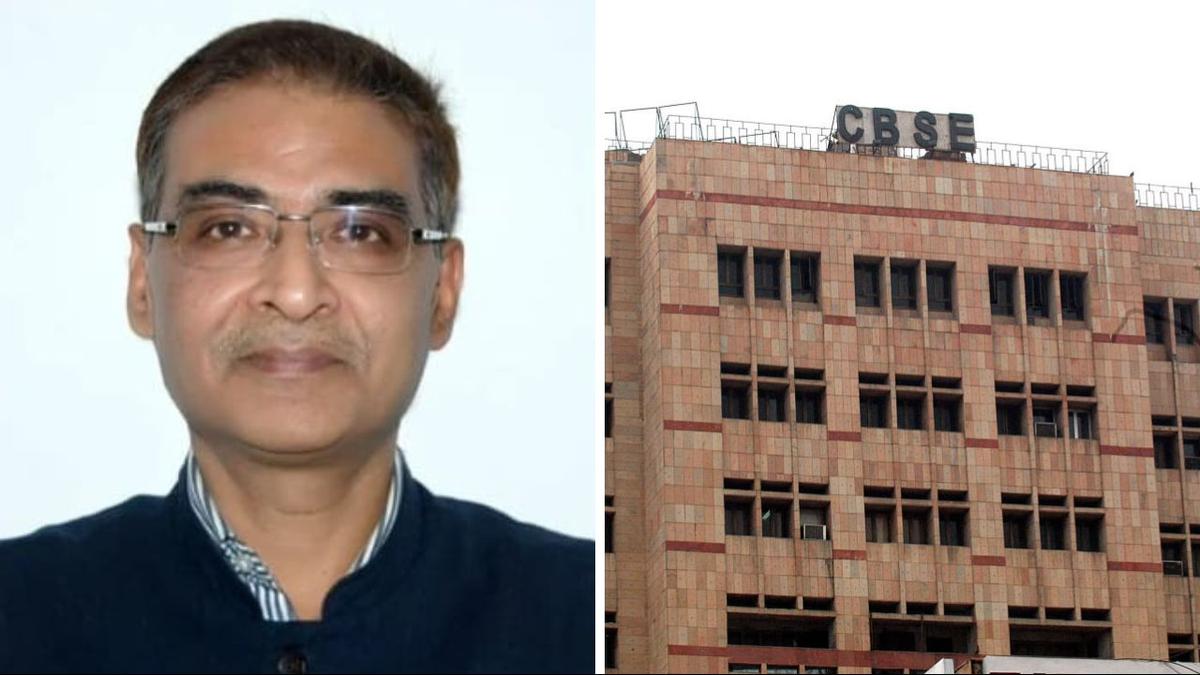ARTICLE AD BOX
Last Updated:August 08, 2025, 13:29 IST
The US has raised tariffs on India citing Russian oil, but analysts point to trade demands, a double standard, and Trump’s personal grievances as the real drivers behind the move

US President Donald Trump and Prime Minister Modi in the White House. (Reuters Image)
When US President Donald Trump signed an executive order on August 6 imposing an additional 25 per cent tariff on Indian goods, the stated reason was blunt: New Delhi’s continued purchase of Russian oil was “fuelling Russia’s war machine" in Ukraine.
The move, which raises the total US tariff on Indian goods to 50 per cent, the highest rate currently imposed by the US on any major trading partner barring Brazil, comes with a 21-day implementation window if India does not change course.
But a closer look at the fine print, and at who else is (and isn’t) being targeted, suggests a far more complicated picture, according to several analysts.
The Official Reason: Russian Oil Purchases
Trump’s stated reasoning is that India’s purchase of crude oil is “fuelling Russia’s war machine" at a time when the US and its allies have poured billions into supporting Ukraine’s defence. Yet in practice, the tariff order exempts Indian energy exports, including gasoline and diesel refined from that same Russian oil, from the additional 25 per cent duty. This means that while crude oil imports from India are framed as a security threat, refined fuels made from the same crude can still enter the US market tariff-free.
Geopolitical commentator and strategist Brahma Chellaney called this “the height of hypocrisy", noting that the exemption “has little to do with Russian oil and everything to do with forcing a one-sided trade deal." Energy columnist Javier Blas made a similar point: “I love the fact the 25% extra US tariff on India doesn’t apply if India buys Russian oil, refines it and sells the, say, gasoline or diesel, in the US market."
Another sign that Trump’s punitive tariffs on India have little to do with Russian oil and everything to do with forcing a one-sided trade deal is this: Indian refined fuels like gasoline and diesel remain exempt from the latest 25% tariff hike. In other words, while claiming to…— Dr. Brahma Chellaney (@Chellaney) August 7, 2025
He stressed that this isn’t an India-only loophole, all US energy imports have so far been exempt from Trump’s tariff hikes, but applying that blanket carve-out here means the very flows Trump claims to be punishing can continue unhindered.
Why China Gets A Pass
Another glaring gap in the sanctions logic, analysts say, is China. Beijing is the world’s largest buyer of Russian oil, importing significantly more than India. Yet, it has not been hit with fresh duties under Trump’s latest tariff order.
South Asia analyst Michael Kugelman called this selectivity “a double standard" in an interview with ANI. He argued that the difference may have less to do with trade volumes and more to do with Trump’s personal grievances. “China has not stood out there and refused to let President Trump take credit for his role in the ceasefire… These are things that happened with India," he said, referring to New Delhi’s public rejection of Trump’s repeated claim that he mediated the post–Operation Sindoor ceasefire with Pakistan.
Kugelman noted that such episodes may have contributed to Trump reserving “some of his greatest ire on the trade and tariff front for India and for the Indian government."
Even within Trump’s own Republican Party, there is discomfort at the disparity. Former UN ambassador Nikki Haley wrote on X: “India should not be buying oil from Russia. But China, an adversary and the number one buyer of Russian and Iranian oil, got a 90-day tariff pause. Don’t give China a pass and burn a relationship with a strong ally like India."
India should not be buying oil from Russia. But China, an adversary and the number one buyer of Russian and Iranian oil, got a 90-day tariff pause. Don’t give China a pass and burn a relationship with a strong ally like India.— Nikki Haley (@NikkiHaley) August 5, 2025
US Official Explanation: Peter Navarro’s View
When asked directly why China had escaped the new penalties, Trump’s trade adviser Peter Navarro replied: “We have over 50 per cent tariffs on China already… we don’t want to get to a point where we actually hurt ourselves."
Navarro did not shy away from criticising India, calling it the “maharaja of tariffs" and alleging that New Delhi uses US dollars to pay Russia for oil, which Moscow then uses to fund its military. “American taxpayers are then called upon to pay for the weapons that have to defend Ukraine against Russian armaments paid for by American dollars that came from India," he said. He also framed the India tariffs as “a pure national security issue associated with India’s abject refusal to stop buying Russian oil."
Trade Leverage Behind The Tariffs
Brahma Chellaney has argued that the new tariffs have “less to do with Russian oil and more to do with coercive brinkmanship." He sees the move as part of a push for a unilateral trade agreement on US terms, with punitive tariffs used as leverage.
“Trump is playing hardball with India to extract bigger trade concessions. His executive order slapping punitive levies on New Delhi has less to do with Russian oil and more to do with coercive brinkmanship. Tellingly, it makes no mention of the world’s top buyer of Russian oil: China. Trump has effectively given India a three-week ultimatum — cave to his trade demands or face another 25% tariff hike, on top of the 25% tariffs already announced," he wrote on X.
Trump is playing hardball with India to extract bigger trade concessions. His executive order slapping punitive levies on New Delhi has less to do with Russian oil and more to do with coercive brinkmanship. Tellingly, it makes no mention of the world’s top buyer of Russian oil:…— Dr. Brahma Chellaney (@Chellaney) August 6, 2025
Krystle Kaur, an adviser to NATO, described the decision as “Donald Trump’s way of power play." She warned that the move risks replacing cooperation with mistrust and could have long-lasting diplomatic consequences.
She told PTI: “I want to say that I am extremely disappointed in Donald Trump and this decision. I think placing 50 per cent on India is detrimental to not just trade between the two countries but the overall relation, especially when it has taken a long time to create… I think this is creating a lot of mistrust in the Indian government. I think, this is Donald Trump’s way of power play."
Geopolitical Context: Ukraine And US Strategy
Chellaney, in a separate post, highlighted that Trump’s push for a Ukraine ceasefire is driven less by humanitarian concerns and more by the West’s fear of defeat. The fact that Trump’s decision to meet Putin came right after imposing sanctions on India indicates, in Chellaney’s view, a rising desperation in US policy.
He said, “Trump is pushing for a Ukraine ceasefire not out of concern for the bloodshed, but because the West now faces possible defeat in the war — a scenario Washington is desperate to avoid, as it would stain his legacy. With Russia’s summer offensive grinding on, Trump’s decision to meet Putin — coming right after slapping India with secondary sanctions over Russian oil — is the clearest sign yet of his growing desperation."
Trump is pushing for a Ukraine ceasefire not out of concern for the bloodshed, but because the West now faces possible defeat in the war — a scenario Washington is desperate to avoid, as it would stain his legacy. With Russia’s summer offensive grinding on, Trump’s decision to…— Dr. Brahma Chellaney (@Chellaney) August 7, 2025
Swedish economist Anders Åslund has also been sharply critical of Trump’s approach toward India. In one tweet, he dismissed Trump’s claim about India’s economy, saying: “Trump has declared India’s flourishing economy ‘dead’. Trust Trump, if he says anything it must be a lie. In reality, India has steadily the highest growth rate in the G20. How can US republicans tolerate such a liar?"
Trump has declared India’s flourishing economy “dead".Trust Trump, if he says anything it must be a lie.In reality, India has steadily the highest growth rate in the G20.How can US republicans tolerate such a liar?https://t.co/Y4dyy7iGWS— Anders Åslund (@anders_aslund) August 6, 2025
On the tariffs, Åslund, along with commentator Phillips P O’Brien, pointed out that the measures, delayed by 21 days, are unlikely to harm Russia but risk alienating India. Åslund went further, accusing Trump of “pretending to be tough on Russia, but not really… alienating India rather than doing anything at all against his beloved Putin."
Looking Ahead: Negotiations And Implications
The 21-day window before the new tariffs take effect provides a narrow but critical opportunity for backchannel negotiations between Washington and New Delhi. According to PTI, a US delegation is scheduled to arrive in India on August 25 for the sixth round of talks on the proposed bilateral trade agreement. Officials from both countries are reportedly trying to advance the stalled negotiations, though progress has been slower than expected.
Michael Kugelman warned this could be “the worst crisis the relationship has faced over the last two decades." Yet, he also highlighted the inherent strength of the US-India partnership, describing it as “multifaceted" with enough strategic depth and diverse areas of cooperation to potentially withstand even this severe shock.
For now, the official line is that the tariffs are about Russian oil. But with energy products exempt, China untouched, and multiple officials and analysts pointing to trade leverage and personal animus, the fine print tells a more complex story.

Karishma Jain, Chief Sub Editor at News18.com, writes and edits opinion pieces on a variety of subjects, including Indian politics and policy, culture and the arts, technology and social change. Follow her @kar...Read More
Karishma Jain, Chief Sub Editor at News18.com, writes and edits opinion pieces on a variety of subjects, including Indian politics and policy, culture and the arts, technology and social change. Follow her @kar...
Read More
- Location :
- First Published:
August 08, 2025, 13:29 IST
News explainers Fine Print Of Trump's India Tariffs: Frustration, Double Standards, And The Russian Oil Ruse?
Disclaimer: Comments reflect users’ views, not News18’s. Please keep discussions respectful and constructive. Abusive, defamatory, or illegal comments will be removed. News18 may disable any comment at its discretion. By posting, you agree to our Terms of Use and Privacy Policy.
Read More



.png)
.png)
.png)
















 3 hours ago
5
3 hours ago
5









 English (US) ·
English (US) ·